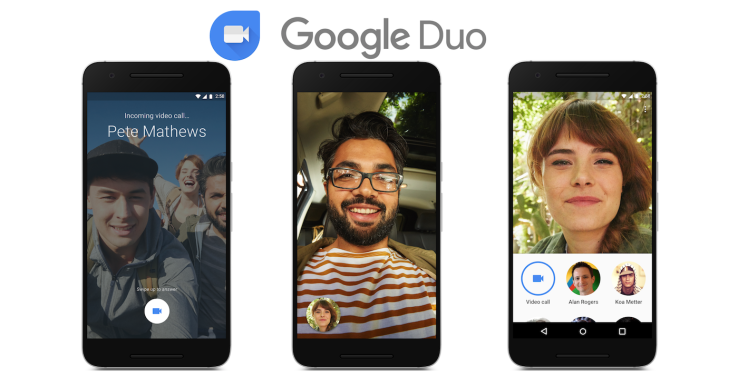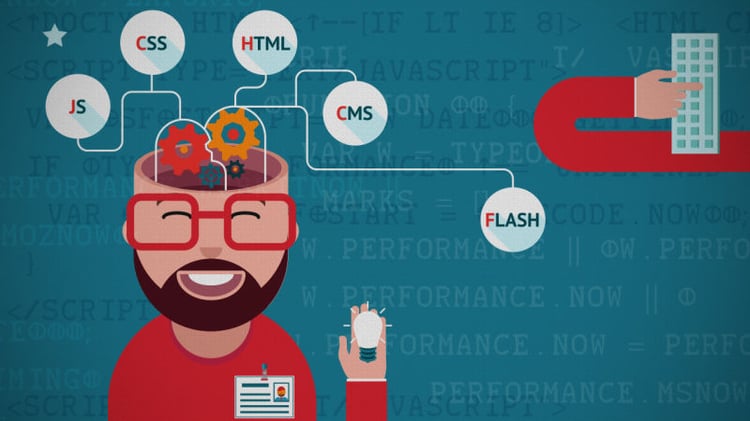

5 Digital Bites B/F Breakfast: Google Duo, Blog Post Length, Automation and Job Loss & More


See the caller even before the call starts? Explore features of Google’s latest video-app called Duo in this week’s 5 Digital Bites.
In this post, we also explore the right size of a blog post and what automation and job loss mean for us in the future.
More from digital land: Beware! things you should not say to a programmer; My interface or yours?
1) Knock Knock: Google Duo's Arrival To Rival Facetime
 Google’s answer to Apple’s Facetime is Duo. The video-app aims to make one-to-one calling between Android phones simpler and provides an alternative to Facetime when an iPhone user wants to video-call his or her Android friend.
Google’s answer to Apple’s Facetime is Duo. The video-app aims to make one-to-one calling between Android phones simpler and provides an alternative to Facetime when an iPhone user wants to video-call his or her Android friend.
Duo provides additional features to differentiate itself from Facetime. With Knock Knock, the other person can see what you’re doing live at the moment even before he or she picks up the call. It’s like a knocking on your door (actually, your screen to be exact).
The idea is to get you to smile before the call starts. Perhaps, that assumes we like the person on the other side. Fortunately, Knock Knock can also be disabled for those who find it a little uncomfortable.
With so many communication apps out there, Google Hangouts, Facebook Messenger, Snapchat, Facetime, Hangouts, will Duo entice users?
Try it.
>> Originally from CNET
Image source: Tech Crunch
Shared by Huong Le, Content Marketer
2) Things You Should Not Say or Do To A Programmer

To non-programmers: don’t interrupt programmers when they are in coding mode. Don’t say things like “Are we on track?” or “Sorry to interrupt you, just had a quick question” or “Give me a status update.” Don’t tap them on the shoulders.
Don’t bother them.
Ken Mazaika, CTO, Co-founder & Mentor at thefirehoseproject.com, provides the reasons behind some of the aforementioned don'ts when working with programmers:
- We don’t know whether we’re on track because something can happen that puts us off track within seconds
- It takes programmers 30 minutes to get back to our mode so one minute of interruption does matter
- That status update can wait. Let us focus on solving the problems first
- The shoulder tapping is physically jarring
- Emotions can put off rational decisions
The key, according to Ken, is give them enough respect, time and space, and be understanding.
>> Originally from Quora
Image source: Life Hacker
Shared by An Phan, Technical Director
3) How Long Does Your Blog Post Should Be?

These days, people don’t like to read long blog posts.
However, lengthy blog posts help with SEO because Google can extract more clues about the content of your text according to Marieke van de Rakt of Yoast, a company that focuses on website optimisation.
A blog post needs at least 300 words in order to be ranked. A loooong blog post that is 1,000 words or more can increase organic traffic to your site because it can turn up in search results for various long-tail keywords.
But do not babble. Badly written articles are a no-go for Google because people will click to leave your website. Your content won’t be shared.
Remember: blog post length matters but couple it with good writing.
>> Originally from Yoast
Image source: Pexels
Shared by Ying Yi Wan, Content Marketer
4) Is Technology Replacing Us?

5.1 million jobs lost.
The World Economic Forum predicts that's the number of jobs lost by 2020 due to the rise of robots and artificial intelligence. Apparently administrative and office jobs will account for two thirds of the loss.
Jeffrey Selingo, author of the New York Times Bestseller There Is Life After College, argues that we should not consider automation and computerisation as a threat to economic security. Instead, we need to complement technology. This can be done by teaching students social, analytical and communication skills, instead of just automated, repeatable skills.
>> Originally from LinkedIn
Image source: Pexels
Shared by Dave Teo, Project Manager
5) My Interface or Yours?

Imagine going to a supermarket and there’s this ketchup bottle that says: “Your ketchup."
Will you buy it?
In the online world, that’s how products are labeled. YouTube and Google Drive brand their services in the “my stuff” sphere -- My Channel, My Drive --, while Amazon and many other online retailers are in the “your stuff” sphere -- Your Order, Your Subscription.
John Saito, UX Writer at Dropbox, offered several interesting perspectives. He suggests using I, me, my or mine when the user is interacting with the product; you or your when your product is asking questions, giving instructions, or describing things to the user.
>> Originally from Medium
Image source: Some Cards
Shared by Dave Teo, Project Manager
Want more digital news? Check out the rest of our 5 Digital Bites b/f Breakfast series!
Credits & Sources
Header image: Pexels
More insights